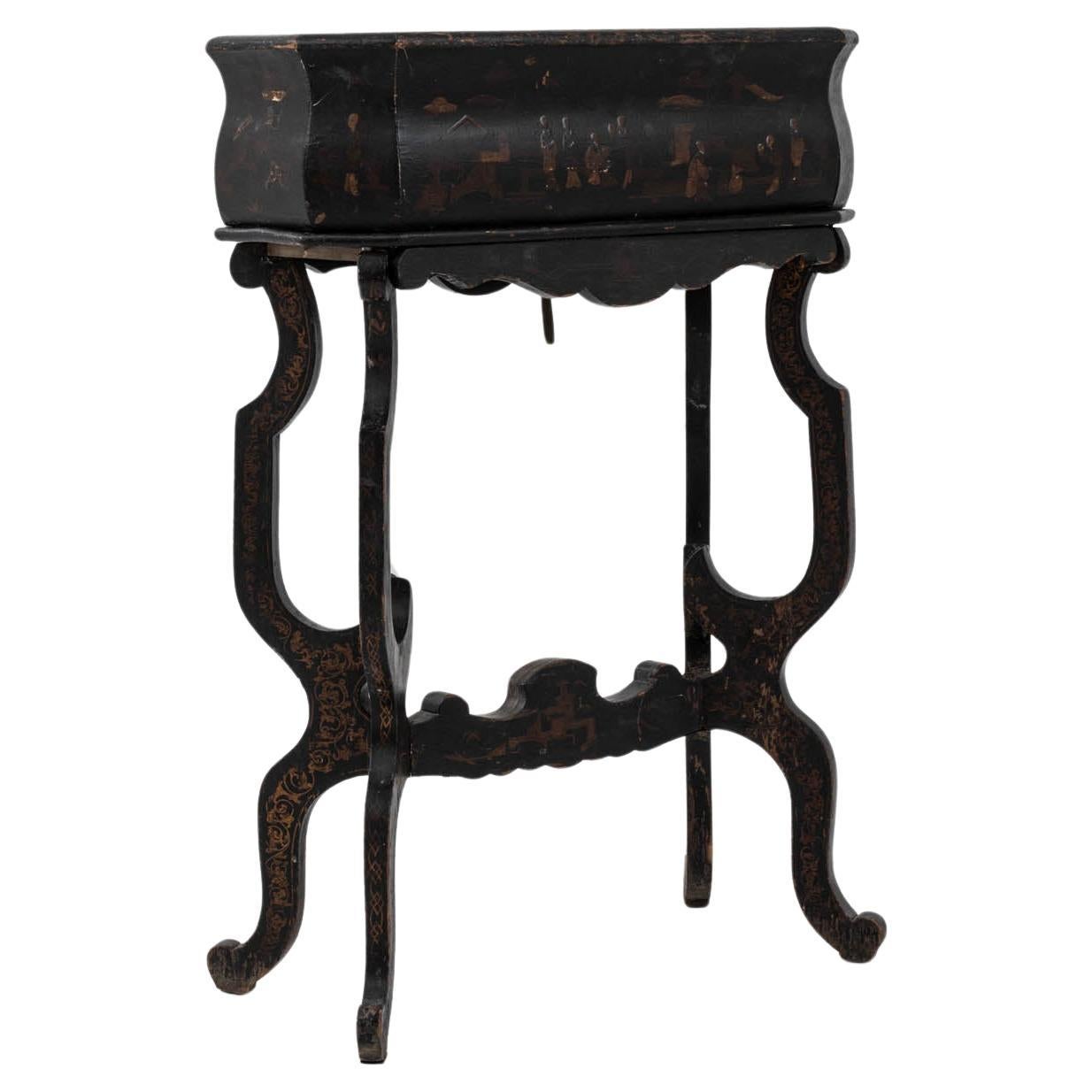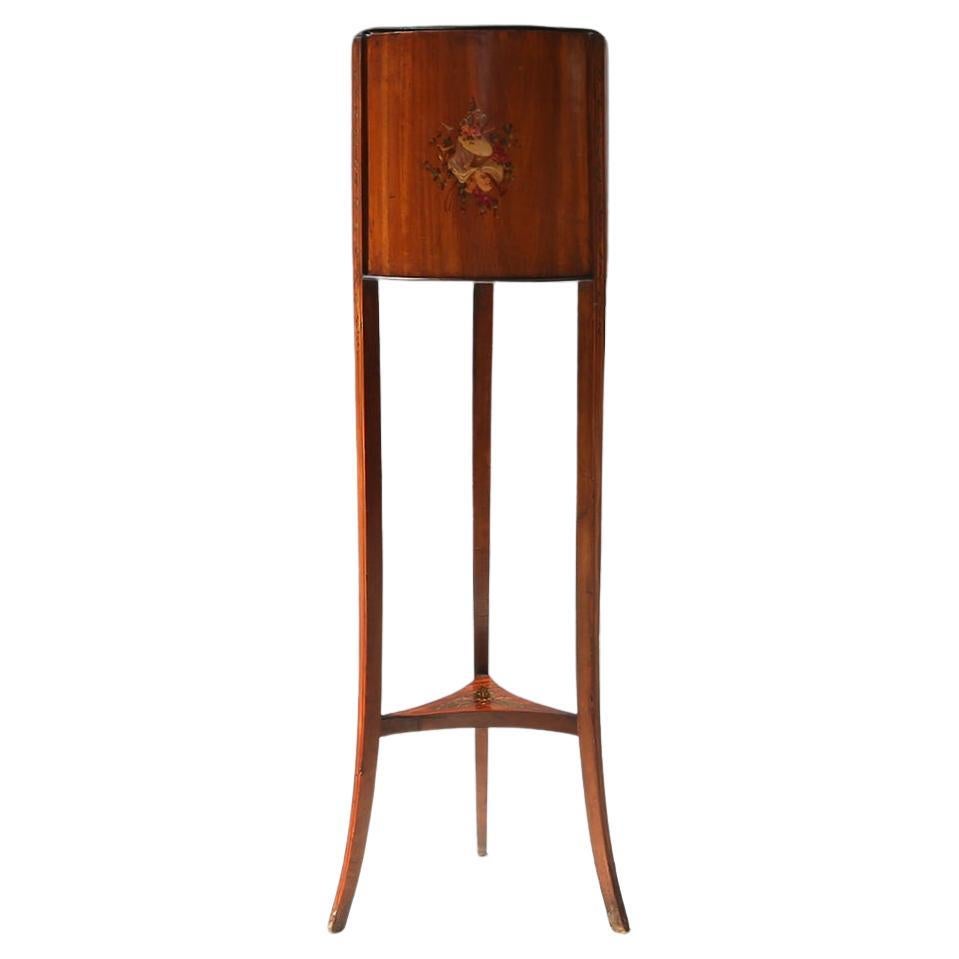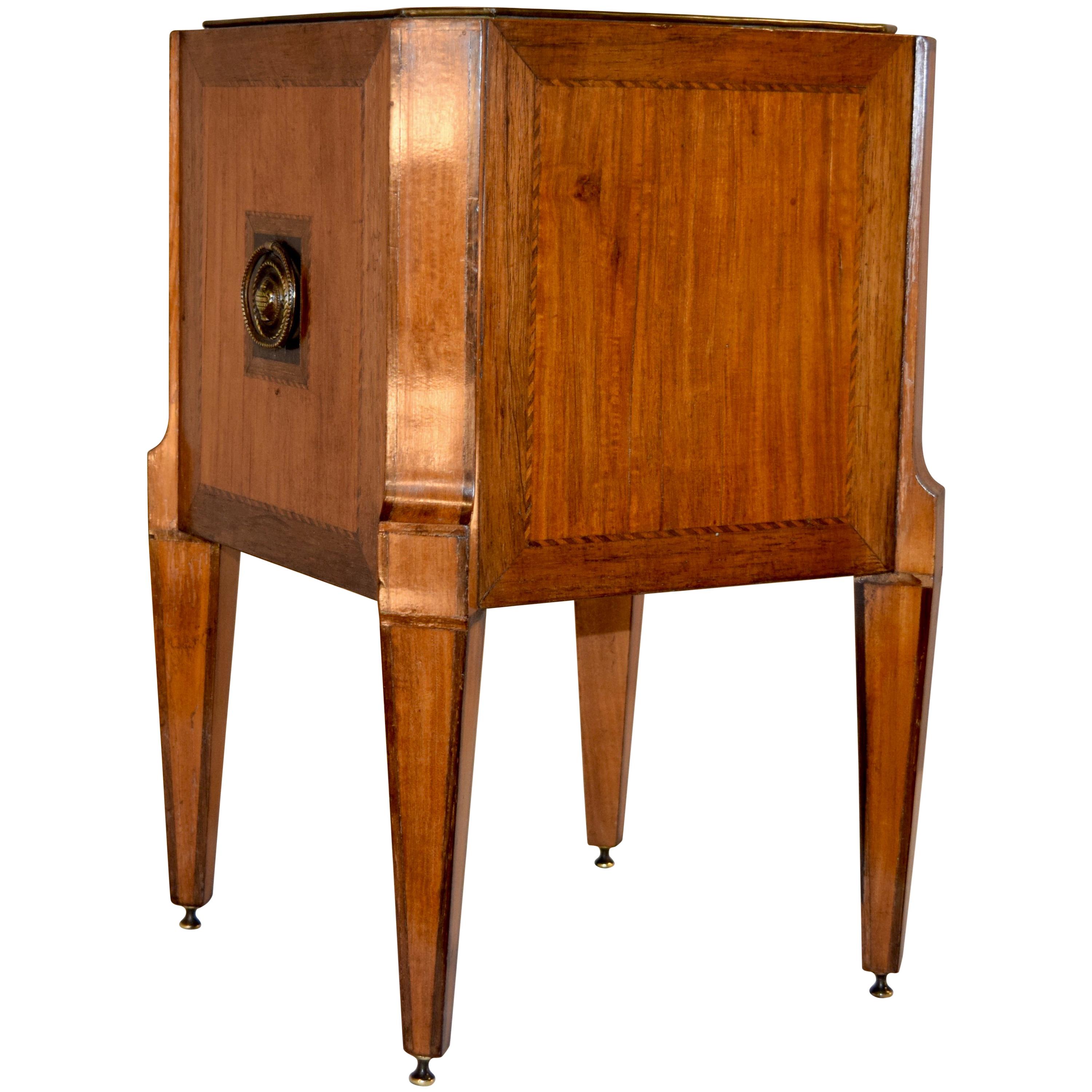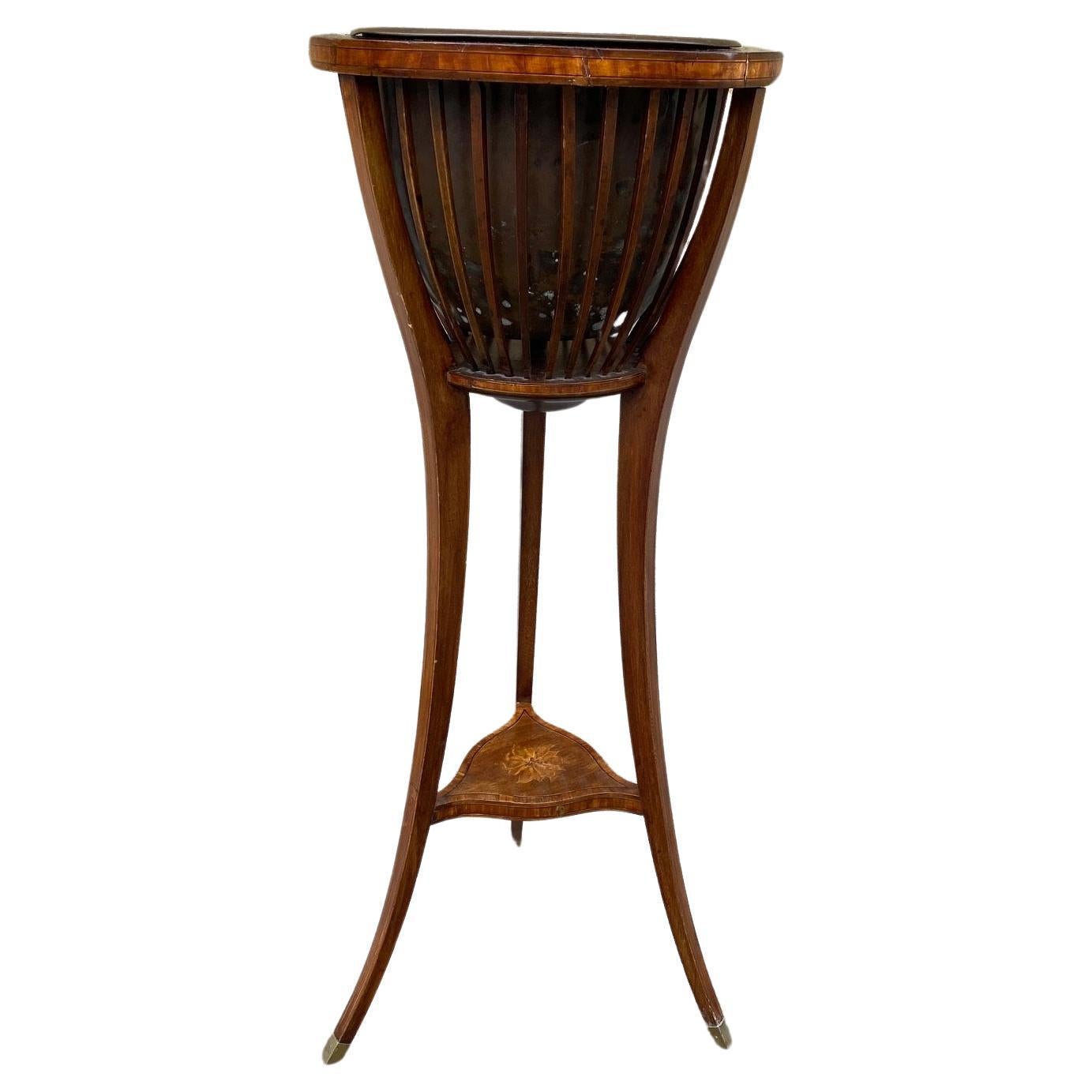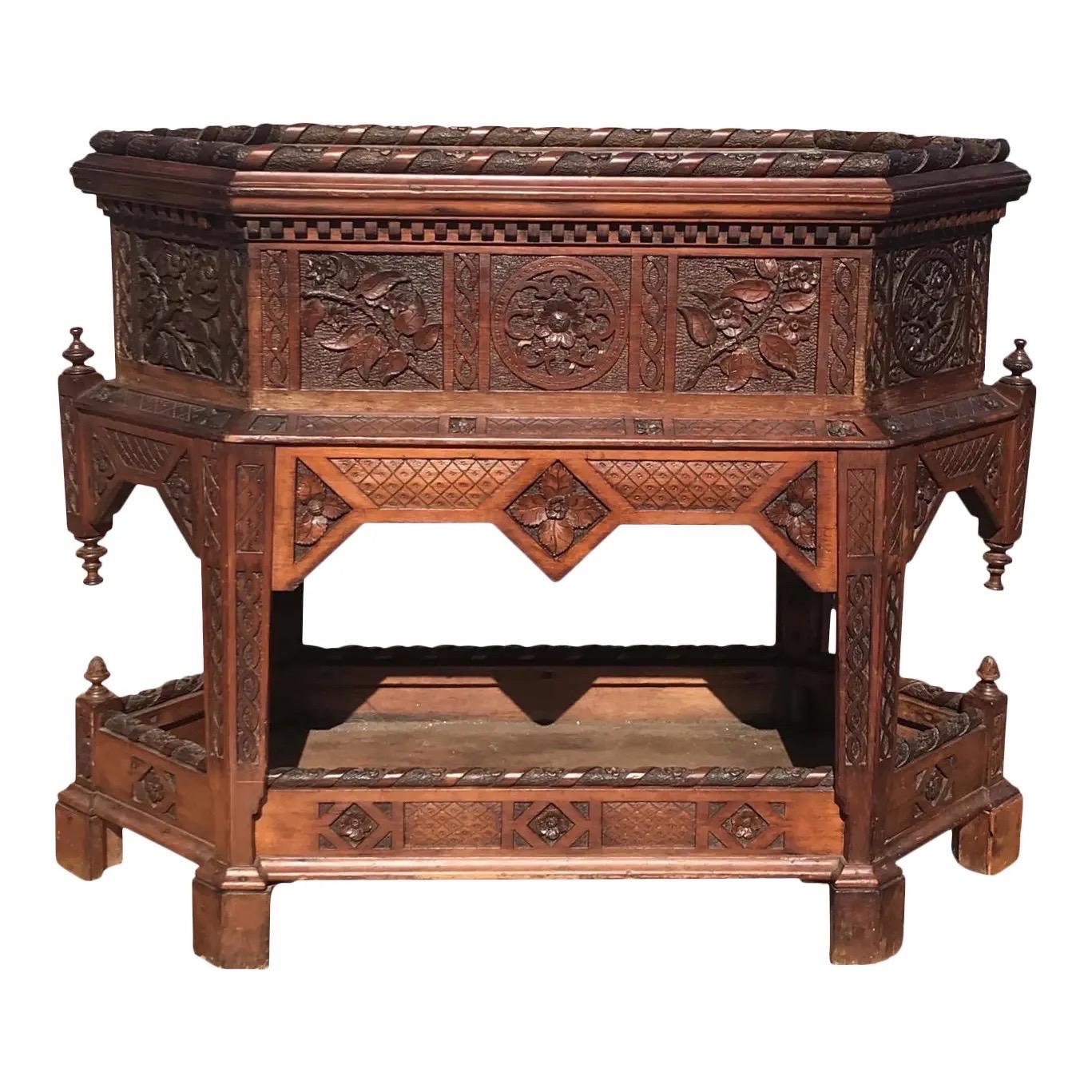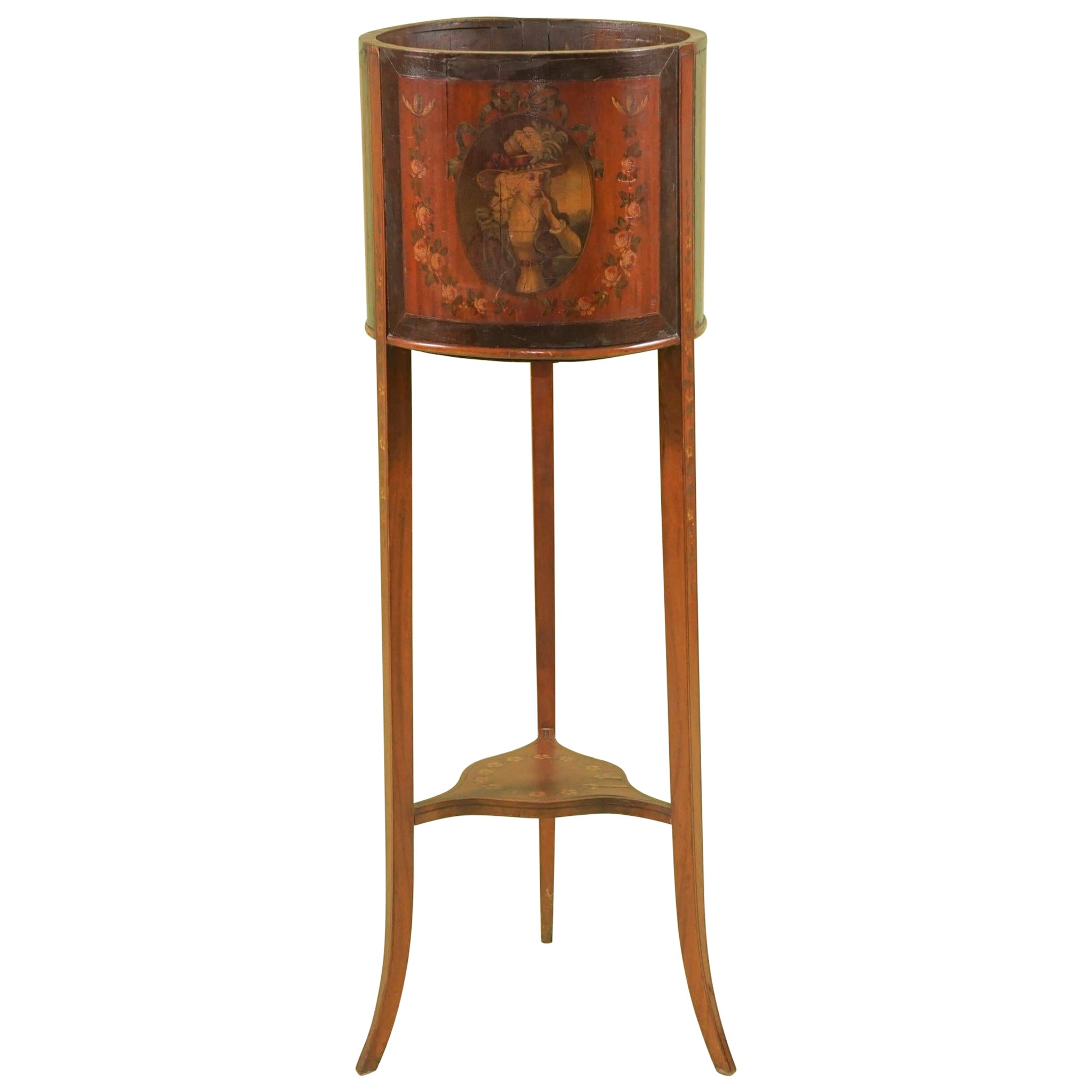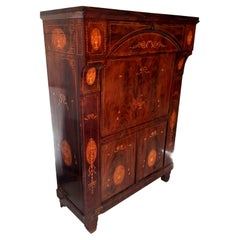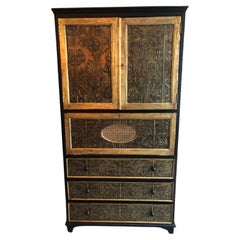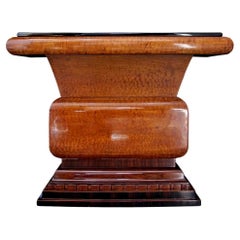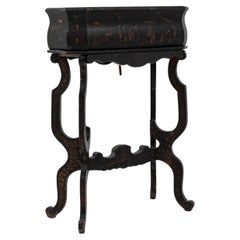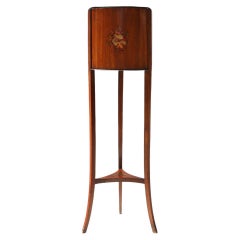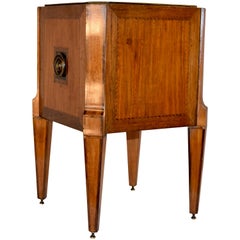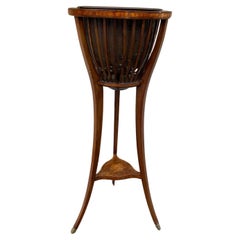Items Similar to Planter in Cooper and Wood, England, Style Arts and Crafts, 1880, England
Video Loading
Want more images or videos?
Request additional images or videos from the seller
1 of 6
Planter in Cooper and Wood, England, Style Arts and Crafts, 1880, England
$18,000
£13,657.99
€15,616.69
CA$25,141.12
A$27,953.50
CHF 14,595.78
MX$340,262.21
NOK 186,235.76
SEK 174,494.01
DKK 116,550.20
Shipping
Retrieving quote...The 1stDibs Promise:
Authenticity Guarantee,
Money-Back Guarantee,
24-Hour Cancellation
About the Item
Amaizing planter
Material: wood and copper
Country: England
We have specialized in the sale of Art Deco and Art Nouveau and Vintage styles since 1982.If you have any questions we are at your disposal.
Pushing the button that reads 'View All From Seller'. And you can see more objects to the style for sale.
Style: Arts and Crafts
The Arts and Crats movement emerged in the last decades from twentieth century, like a reaction againts the first industrial style that was developed in England. The one called Victorian Style. It is said that those who came to visit the Universal Fair in 1851, arrived to the Crystal Palace from London, and also amazed by the technical advances, were surprised by the bad taste of all that was massive manufacture. So the idea of ??industrial progress began to mingle with the intuition that a reaction was needed to return the objects of daily life a certain aesthetic dimension, to accompany thenatural functions for which they were manufactured. This reaction was named Art and Crafts, because it pretend to raise social dignity and aesthetics of design and applied arts of all, integrating them into a harmonious and beautiful architectural environment. From the action of Art & Crafts point of view, it experienced a major boost in 1861, when William Morris founded the firm Morris, Marshall, Faulkner Company, commonly known as the Morris Company. In 1890 Morris founded the Kelmscott Press, an imprint of the artisan who left small print runs of some of the most carefully printed books produced in history and was able to exert a powerful influence on the large commercial publishers for decades. Principles of Arts & Crafts Among the ideas of the Arts and Crafts features are philosophical, ethical and political. We highlight the most important: Rejection of the separation between art and craft. The design of useful objects is considered a functional and morality necessity. Refusal of industrial work, which separate the worker from the work done, fragmented tasks. Proposal for a return to medievalism, both in architecture (in Gothic) and the applied arts. Proposal of architecture as a center of all design activities. One idea would be collected by the rationalism of the early twentieth century. Proposed group of artisans in guilds and workshops, following the medieval model of collective work. Proposal of a job well done, well finished and satisfying to the artist and the customer.
Why are there so many antiques in Argentina?
In the 1880 – 1940 there was a grate wave of immigration encouraged by the periods of war that were taking place.
1st World War took place between 1914 and 1918
2nd World War took place between 1939 and 1945
The immigrants options were New York or Buenos Aires. Tickets were cheap and in Buenos Aires they were welcomed with open arms, as it was a country where everything was still to be done.
Argentina was the country of new opportunities, labour was needed and religious freedom was assured, in many cases the of the family travel first until they were settled and then the rest of the family members join them.
In the immigrant museum “Ellis Island Immigrant Building” in New York you can se the promotional posters of the boats that would take them to a new life.
Between the years 1895 and 1896, Argentina had the highest DGP (gross domestic product) per capita in the world according to the Maddison Historical Statistics index, this situation arose due to the large amount of food being exported to European countries, which were at war.
The Argentinean ships left the port of Buenos Aires with food, but they returned with furniture, clothes and construction elements, (it´s common to see this the old buildings of the historic neighbourhood of San Telmo, the beams with the inscription “Made in England)”, as well as many markets that were built in Buenos Aires, such us the San Telmo Market, whose structure was brought by ship and afterwards assembled in 900 Defensa Street.
With the great influence of European immigrants living in the country, the children of the upper classes travelled to study in France, resulting in the inauguration of “La Maison Argentinienne”, on 27th of June 1928, in the international city of Paris, which hosted many Argentinians that were studying in Frace.
It´s the fourth house to be built after France, Canada and Belgium, being the first Spanish-speaking one. Still in place today (17 Bd Jourdan, 75014, Paris, France). Many of the children of these wealthy families who attended international art exhibitions, museums and art courses abroad, took a keen interest in the European style. This is why Buenos Aires was at the time referred as “The Paris of South America”.
Between the years 1890 and 1920 more than a hundred Palaces were built on Alvear Avenue the most exclusive avenue in Buenos Aires. Today some of these palaces have been transformed into museums, hotels and embassies.
In the year 1936, the Kavanagh building was inaugurated, it was the tallest reinforced concrete building in South America.
During 1994 the American Society of Civil Engineers distinguished it as an “international engineering milestone”, and it´s now considered a World Heritage of Modern Architecture.
At the time was common to hire foreign architects such as Le Corbusier, who visited Buenos Aires/Argentina in 1929 and in 1948 he drew up the blueprints for a house built in La Plata City (which was declared a World Heritage Site).
In 1947, the Hungarian architect Marcelo Breuer designed “Parador Ariston” in the seaside city of Mar del Plata. After an Argentinean student at Harvard University convinced him to come to Argentina. He worked on an urban development project in the Casa Amarilla, area of La Boca.
The Ukrainian architect, Vladimiro Acosta, arrives in Argentina in 1928 and worked as an architect until que moved to Brazil.
Antonio Bonet, a Spanish architect who worked with Le Corbusier in Paris, arrives in Argentina in 1937, where he carried out several architectural works and in 1938 designs the well-known BFK chair.
Andres Kálnay, of Hungarian origin, made around 120 architectural masterpieces, among which the former Munich brewery stands out, he even made the furniture’s design.
The German architect, Walter Gropius, director of the Bauhaus, lived in Argentina, where he wrote articles for “Sur” magazine and founded in Buenos Aires, an architectural firm with Franz Möller, who was also an architect, where he built two houses.
At the same time several famous designers decided to immigrate to Argentina, among them we can find the well-known French designer, Jean-Michel Frank, who arrived in the country in 1940 and also worked for the Rockefeller family.
Special pieces were made, which were sold exclusively in the country, such as the well-known German company “WMF”, who sold their products by catalogue, which were chosen by the ladies of high society in the list of wedding gifts, as well as the pieces designed by Christofle.
The Swiss sculptor Alberto Giacometti, made special pieces for Argentinean mansions.
In 1904 the first Jansen branch outside Paris was established in Buenos Aires, as the Argentinean clientele demanded a large amount of furniture, from the end of the 19th century to the mid-20th century.
In 1970, the brand Rigolleau Argentina made pieces authorised by Lalique.
The brands Maple and Thompson also set up shop in the country.
The French plastic artist, Marcel Duchamp moved to Argentina in 1918-1919.
Glass signed Gallé, Charder, Leverre, Schneider, Muller and other French firms. They were bought in flower shops and were given to ladies with beautiful floral arrangements.
Some furniture manufacturers travelled to international fairs and bough the patterns to produce the furniture in Argentina, such as the furniture firm Englander and Bonta, who bought the patterns ins Italy.
It is worth mentioning that in Argentina we have the largest community of Italians outside of Italy, as it is estimated that 70 percent of the inhabitants have at least one Italian descendant, followed by Spanish immigrants.
The most Important furniture stores in Argentina:
Comte is founded in 1934 (under the direct management of Jean Michel Frank in 1940).
Nordiska (Swedish company established in 1934).
Churba in 1960, a company that brought foreign designers to present their furniture in the country:
Denmark: (Arne Jacobsen, Finn Juhl, Bender Madsen, Ejner Larsen, Poul Kjaerholm, Hans Wegner)
Sweden: (Hans Agne Jakobsson, Gustavsberg)
United States: (Herman Miller)
Finland: (Lisa Johansson, Folke Arstrom, Tapio Wirkkala, Alvar Aalto, Timo Sarpaneva)
Swedish Factory: (Orrefors)
Italy: (Littala, Vico Magistretti, Emma Gismondi, Gae Aulenti, Angelo Mangiarotti, Elio Martinelli, Gianna Celada, Angelo Mangiarotti, Mario Bellini, Carlo Scarpa)
Finland: (Olivia Toikka)
Plata Lappas (Lappas Silver): a goldsmith shop founded in 1887 in Argentina by Alcibiades Lappas of Greek origin.
In 2019, in Argentina took place “the Art Deco world congress”, in which we participated as hosts invited by Geo Darder, founder of the Copperbridge – Foundation, in which prominent people from all over the world attended to learn about Art Deco in Argentina.
Argentina currently has more than 100 Art Deco buildings and another 90 Art Nouveau buildings throughout the city of Buenos Aires.
Argentina is a country that has not been involved in many wars, which is why it has been a refuge for works of art and antiques from different periods of time, unlike European countries. That is way many collectors, museums and antique dealers from all over the world visit it, you should not miss the opportunity to visit this great country.
Laura Guevara Kjuder, architect.
- Dimensions:Height: 35.44 in (90 cm)Width: 35.63 in (90.5 cm)Depth: 10.63 in (27 cm)
- Style:Arts and Crafts (Of the Period)
- Materials and Techniques:
- Place of Origin:
- Period:
- Date of Manufacture:1880
- Condition:Wear consistent with age and use.
- Seller Location:Ciudad Autónoma Buenos Aires, AR
- Reference Number:Seller: F-TO-8351stDibs: LU6785230444092
About the Seller
5.0
Vetted Professional Seller
Every seller passes strict standards for authenticity and reliability
Established in 1982
1stDibs seller since 2022
37 sales on 1stDibs
Typical response time: <1 hour
- ShippingRetrieving quote...Shipping from: Ciudad Autónoma Buenos Aires, Argentina
- Return Policy
Authenticity Guarantee
In the unlikely event there’s an issue with an item’s authenticity, contact us within 1 year for a full refund. DetailsMoney-Back Guarantee
If your item is not as described, is damaged in transit, or does not arrive, contact us within 7 days for a full refund. Details24-Hour Cancellation
You have a 24-hour grace period in which to reconsider your purchase, with no questions asked.Vetted Professional Sellers
Our world-class sellers must adhere to strict standards for service and quality, maintaining the integrity of our listings.Price-Match Guarantee
If you find that a seller listed the same item for a lower price elsewhere, we’ll match it.Trusted Global Delivery
Our best-in-class carrier network provides specialized shipping options worldwide, including custom delivery.More From This Seller
View AllDesk in Wood, 1940, Made in France
Located in Ciudad Autónoma Buenos Aires, C
It is an elegant and sophisticated dream desk.
The quality of the furniture and the exotic wood used make it unique. It is an icon of distinction.
You want to live in the golden yea...
Category
Vintage 1940s Italian Art Nouveau Desks and Writing Tables
Materials
Bronze
Bar in Wood, Style, Jugendstil, 1900-1910
Located in Ciudad Autónoma Buenos Aires, C
Amaizing Cabinet
If you want to live in the golden years, this is the bar that your project needs.
We have specialized in the sale of Art Deco, Jugendstil, and Art Nouveau styles si...
Category
Antique Early 1900s English Jugendstil Cabinets
Materials
Wood
$20,000 Sale Price
20% Off
Table Maison L´art Nouveau, Bing Atelier Magasins, Siegfried Bing, Art Nouveau
Located in Ciudad Autónoma Buenos Aires, C
Incredible Art Nouveau table. With the original label, from Siegfried Bing's or Samuel Bing shop.
We have specialized in the sale of Art Deco and Art Nouveau and Vintage styles since 1982. If you have any questions we are at your disposal.
Pushing the button that reads 'View All From Seller'. And you can see more objects to the style for sale.
L'art Nouveau Bing, Atelier Magasins sold many pieces to the Louvre museum.
It was the most revolutionary store of the time.
It was located at 22 rue de Provence, Paris.
If you want a unique Art Nouveau piece, this should be your choice.
We have specialized in the sale of Art Deco and Art Nouveau styles since 1982.If you have any questions we are at your disposal.
Pushing the button that reads 'View All From Seller'. And you can see more objects to the style for sale.
the Maison de l'Art Nouveau ("House of New Art"), abbreviated often as L'Art Nouveau, and known also as Maison Bing for the owner, was a gallery opened on 26 December 1895, by Siegfried Bing at 22 rue de Provence, Paris.
The building was designed by the architect Louis Bonnier (1856–1946).[2] Unlike his earlier stores at the same location and nearby at 19 rue Chauchat that specialized in Japanese and Asian art objects, the gallery specialized in modern art.[1][3] The original exhibition featured windows designed by Nabi artists, including Henri de Toulouse-Lautrec, and made by Louis Comfort Tiffany...
Category
Antique Early 1900s French Art Nouveau Side Tables
Materials
Wood
Console in Wood, French 1930, Style, Art Deco
Located in Ciudad Autónoma Buenos Aires, C
Art Deco
Year: 1930
Country: French
Wood
Finish: polyurethanic lacquer
It is an elegant and sophisticated console.
You want to live in the golden years, this is console that your pr...
Category
Vintage 1930s French Art Deco Console Tables
Materials
Wood
Table Arts and Crafts, 1870, Material: Iron, English
Located in Ciudad Autónoma Buenos Aires, C
It does not have a key.
Arts and Crafts
The Arts and Crats movement emerged in the last decades from twentieth century, like a reaction againts the first industrial style that was de...
Category
Antique 1870s English Arts and Crafts Tables
Materials
Iron
Desk Arts and Crafts , 1890, England
Located in Ciudad Autónoma Buenos Aires, C
The set includes, armchair, desk and desk accessories. It is from the first era.
Bibliography: Revue de l’Art N°185 – March 2014, p. 23.
Founded in 1857 by Gustave Keller, the Keller...
Category
Antique 1890s English Art Nouveau Desks and Writing Tables
Materials
Wood
You May Also Like
1880s French Wooden Planter
Located in High Point, NC
This 1880s French wooden planter is a true testament to the ornate and meticulous craftsmanship of the era. Its elegant scrolled legs and intricate floral inlays showcase a deep, ric...
Category
Antique Late 19th Century French Planters and Jardinieres
Materials
Wood
Victorian planter 19th century
Located in Meulebeke, BE
This planter is an authentic English Victorian furniture piece from the 19th century.
The planter has three narrow legs that exude elegance and stability. The wood is beautifully pa...
Category
Antique 19th Century British Victorian Planters and Jardinieres
Materials
Metal
18th Century English Planter
Located in High Point, NC
18th century planter from England made from satinwood and mahogany. The sides are banded and are decorated with barber pole inlay. There are decorative inlaid plaques on opposite sid...
Category
Antique 18th Century English Sheraton Planters and Jardinieres
Materials
Boxwood, Satinwood
Edwardian Period Mahogany Planter
Located in Montreal, QC
Edwardian period mahogany planter inlaid with boxwood string inlay and copper liner.
England c.1890
Category
Antique 1890s British Edwardian Planters, Cachepots and Jardinières
Materials
Mahogany
Irish Elaborately Carved Planter
Located in Sarasota, FL
Unusual ornately carved two part mahogany planter, with original tole liner. Finely carved with life-like roses on side panels, the skirt, with a ribbon carved rim. Made in Ireland,...
Category
Early 20th Century Irish Arts and Crafts Planters and Jardinieres
Materials
Tin
Fine Edwardian Satinwood and Mahogany Paint Decorated Planter
By Angelica Kauffmann
Located in Hudson, NY
This fine painted decorated planter in the manner of Angelica Kauffman was created in England circa 1890 to 1900. Hepplewhite in style the planter was made in England during the Edwardian era. This time saw a great rise in revival styles and culminated with the out break of the first world war. Hepplewhite design is most often associated with fine detail contrasting wood veneers and inlay , delicate painted details and a definite reference to historical precedents. Referencing Kauffman herself the piece is reminiscent of works in her historical painterly style. She i known to have painted a number of commissions on furniture while living in England as well a being one of only two female founding members of the Royal Academy. She classified herself as a painter of historical imagery but is also known for her many significant painting and portraits and scenes of late 18th century upper class life. Many engravings used as pattern survive giving her style and work a great reach in paint decorated furniture...
Category
Antique Early 1900s English Hepplewhite Planters and Jardinieres
Materials
Mahogany, Satinwood
More Ways To Browse
England Antique
Antique Wood Craft
Arts And Crafts Style Art
French Arts And Crafts
Worth And Company
Country Arts And Craft
1960s And 70s Posters
New England Travel Poster
New England Antiques
Swedish Wood Craft
German Arts And Crafts
Ukraine Crafts
Laura Antiques
Swedish Arts And Craft
Arts And Crafts Wood Chairs
Antiques Arts And Crafts
Early American New England Furniture
Antiques And Artisans
